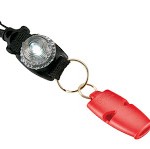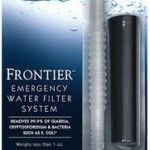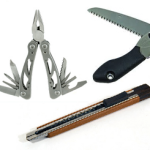Hello, and welcome to the Muskrat Survival blog.
In this series, we’ll explore simple tools and techniques, which will increase your confidence and reduce your level of stress and anxiety in a potential survival situation.
In an age of increasing natural disasters like:
– hurricane Katrina in 2005;
– tornadoes in Geraldton, Ontario in 2011;
– earthquake in Haiti in 2010;
– wildfires in Slave Lake, Alberta in 2011;
– ice storms in Quebec in 1998 and in Maine in 2008;
– flooding in Brandon Manitoba in 2011;
– blackouts in Ontario and New York in 2008;
– e-coli outbreaks in Walkerton, Ontario in 2000;
it is more important than ever to prepare yourself with the basic necessities in case you have to evacuate your home, or even if you have to stay in your home without electricity for an extended period of time. We’ll also cover skills and techniques to survive in the wilderness.
In this post we’ll explore Basic Survival Needs and we’ll look at a few key items you can pack into a large pocket, or carry in your purse or small pouch.
Here are your Basic Survival Needs:
– Shelter
– Fire
– Water
– Signalling
– Tools
– Food
Personal Survival Kit
These are the items I recommend carrying in your Personal Survival Kit:
- Bic Lighter and Weatherproof Matches (fire)
- Whistle and LED Flashlight (signalling)
- Aquamira Water Filter Straw (water)
- Folding Multi-tool, Box-cutter or Saw (tools)
Click Here to Shop For Water Filters/Purifiers
Other items you might choose to carry: small first-aid kit, fishhooks and line, a length of thin rope, energy bars, zip-lok bag to carry water, a better knife, and a compass.
The key thing to remember here, is to keep it small and compact so that you will carry it around with you wherever you go. It can’t help you if it’s not with you.
Shelter
Although the Emergency Blanket or the slightly larger Aluminized Survival Bag is your primary Shelter item, using your tools and a bit of knowledge will allow you to build a basic shelter to make you more comfortable and protect you from the elements.
Ideally your shelter should be near a source of water. However, if you are in a stranded car or snow mobile, a downed airplane, or capsized boat – STAY PUT. Rescuers ALWAYS find the stranded craft before they will find you.
In up-coming posts I’ll show you how to build:
– a basic lean-to (summer episode)
– a debris hut (spring and fall episodes)
– a snow cave (winter episode)
– shelter in your stranded car (winter episode)
– shelter in a small room – ice storm with no electricity (winter episode)
Remember: Safety First!!
– Look around – Don’t make your shelter where it might get flooded
– Look up – Don’t make your shelter where rocks, tree branches or snow might fall on you
– Look down – Don’t make your shelter close to insect colonies
Fire
Fire is so important in a survival situation, that you should carry at least two methods for starting fires and practice building and lighting fires under various conditions.
In upcoming posts, we’ll build a fire under various weather conditions:
– summer
– fall
– winter
– spring
– in the wind and in the rain
Other fire making tools to consider:
– magnesium fire starter
– ferocium rod and striker
– magnifying lens
Remember: Safety First!!
– Never start a fire inside your shelter!
– Plan your camp fire carefully, not too near dry leaves, grasses or other flammable materials.
Water
The average person needs a minimum of one to two litres (quarts) of clean water per day to maintain health. In fact, you may only be able to survive up to three days without water.
Water flows down hill. So in hilly country, water will most likely be found at the base of hills. Even dried riverbeds can hold water just below the surface.
Questionable water should be brought to a boil or treated chemically to ensure its safety.
Remember: Never Drink Sea Water or Urine! They will make you sick and dehydrate you quicker than not drinking any water at all.
Lacking the tools to boil or treat water, you should carry a small water filter like the one from Aquamira. Simply attach the drinking straw to the filter unit and you can drink out of a stream or puddle.
This Aquamira unit can filter up to 20 gallons. It is inexpensive, compact and lightweight. It’s an essential part of your kit.
Note: this unit is NOT effective in treating seawater. Boil seawater and use a large inverted jug to catch and condense the steam. Also, fresh water is available on a salty beach above the high tide mark, but you’ll have to dig for it.
Signalling
If you’re not able to ‘walk out’ of your survival situation, then you’ll have to wait for rescuers.
– A whistle, like a “Fox 40” is much louder than your voice and takes very little energy to use. Three short blasts, followed by a pause, is recognized internationally as a distress signal.
– A flashlight can be used to see things at night, but it can also be used to signal rescuers. The one shown in this blog becomes a flashing beacon if the battery is reversed.
– A signal mirror can be seen for miles and is typically used to signal aircraft or boats. Again, three flashes and a pause is a distress signal. The mirror can also be used when treating wounds on your face.
– Three fires on a beach at night, or three smokey fires in the daytime will signal your distress, but these use up a lot of resources and your energy to tend to them.
Remember, in a survival situation:
– Conserve your energy,
– Walk slowly and purposefully,
– Think Safety First!
Tools
Besides our intelligence, tools and our ability to make tools by using other tools, gives us the advantage over the animals in the wild. It’s what gives us an edge in a survival situation.
Tools can help you build a shelter, catch an animal, prepare it for cooking, and make a weapon to protect you from wild animals.
– A knife is the tool of choice in the wild. The right sized knife can be used for just about everything if it is kept sharp.
– An axe or hatchet can be very useful for shelter making.
– A saw can be used for shelter making if you don’t have anything large enough to chop with.
– Multi-tool or multi-bladed folding knife the bare minimum in a Personal Survival Kit. Carry a better tool in your main pack or on your belt.
– String, rope or snare wire have a multitude of uses around camp…from tying parts of your shelter together to catching your next meal.
– A folding shovel is useful around the fire. It can also be used for digging for roots and insects or finding water.
Remember: SAFETY FIRST!
– Steel tools are SHARP! Use them CAREFULLY!
Food
Energy bars are great in a larger kit, as we’ll see later, but in your Personal Survival Kit, it’s better to have tools to catch food or the knowledge to collect food.
– Small fish hooks already attached to fishing line can be tied to a length of string. Once baited with an insect it can be used to catch small fish, birds or frogs.
– The rubber tubing from a slingshot can be attached to a suitably formed forked branch with some string. This hunting tool with a bit of practice can be used to stun a bird, squirrel or other small creature.
– Many insects are a good choice for fats and proteins, and it doesn’t take many to keep you healthy. Other cultures eat them as a delicacy.
– In the fall, mature seeds from grasses can be collected and eaten either cooked in a mash or raw. Maple trees often have an abundance of winged seeds. Just peel the wings off and use the rather large seeds. White Pine trees have large pinecones. Squirrels break off the individual scales to get at the nutritious pine nuts at their bases. You can eat these too.
– In the summer, don’t overlook blueberries, strawberries, blackberries and other fruit you can positively identify. Rose hips are the seed-filled fruit of the rose, which is a botanical cousin to the apple.
Remember: Do Not Eat any plant you cannot Positively Identify!!!
There are many books available to help you identify edible plants. Get one with coloured pictures and take it out in the field with you to practice.
Summary
So there you have it. You can carry these few items in a small pouch. The key here, is to keep it small enough so that YOU WILL carry it wherever you go.
Identifying edible plants and acquiring the skills needed to build a shelter, light a fire, or use a knife will take a little practice but can go a long way in ensuring your safety in a survival situation.
Be sure to visit my YouTube channel at: http://www.youtube.com/user/MuskratSurvival
Feel free to post your comments and suggestions, and I’ll answer any questions you may have.
See you next time, and remember: YOU CAN DO IT!




